Primitive Bone Knife
During the summer of 2009 I completed the Woodcraft School Primitive Technology course. I do not know if John Rhyder still runs this course but he still does a lot of excellent craft courses.
I originally wrote this How To…. for Fenlander and his Natural Lore blog back in September of 2009. It is a subject I love so thought it would be good to include in my How To…. section as well. I apologise for the quality of some of the pictures, I think the light was poor at the time and my fingers were quite slippery from the marrow.
The course required that at least one our craft items had to be made using only primitive tools and techniques.
I decided to make myself a bone knife and a bark sheath for it. The knife I made from a Lamb’s thigh bone and the sheath was made from Sweet Chestnut (Castanea sativa) inner bark. The How To…. on making the sheath can be found here – Primitive Skills – Bone Knife Bark Sheath.
This post concentrates on the knife only. I have put another link yo the bark sheath at the end.
The techniques I used were from what I had researched at the time and I am sure there are many other methods to do this.
As a word of warning please do have a First Aid Kit on standby as the flint is very sharp and thoroughly wash your hands after wards.
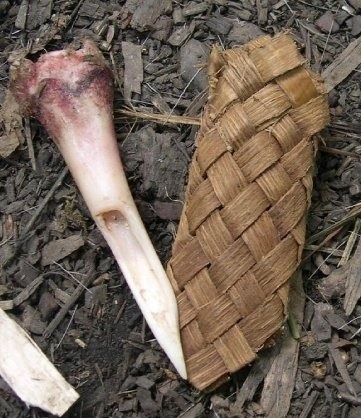
I wanted to be able to use the knife as an Awl for working hides, as a Bodkin for when weaving and as a general knife for cutting cordage and meat.
This post will concentrate on how the knife was made. The next post will be about the sheath.
The bone I used was a thigh bone known as the Shank. Hence the names ‘Lamb Shank’ as a cut of meat and the word ‘Shank’ as a primitive knife.
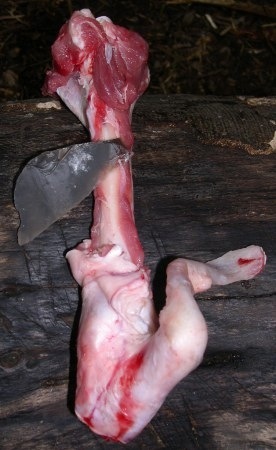
As I was using primitive tools and techniques only I scraped all the fat and flesh off with a piece of flint.
Other students tried burning the fat and flesh off but the made the bone brittle so it easily shattered. It is slippery work that requires a lot of patience. One slip and the flint will cut you as cleanly as any sharp knife.
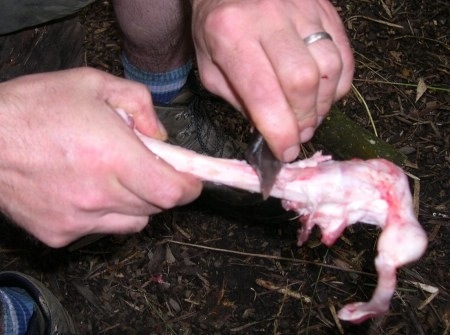
After an hours work I had the bone cleaned up.
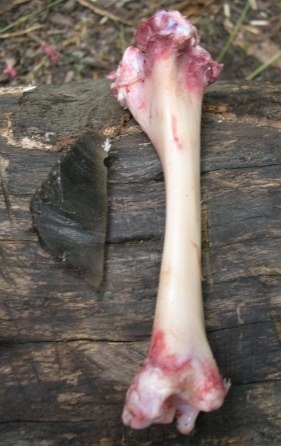
I decided that one knuckle would make a good handle but the other had to be removed.
I scored a line around the whole bone near the knuckle I wanted removed. Apologies for the slightly out of focus picture. The score line was about a couple of millimetres deep.
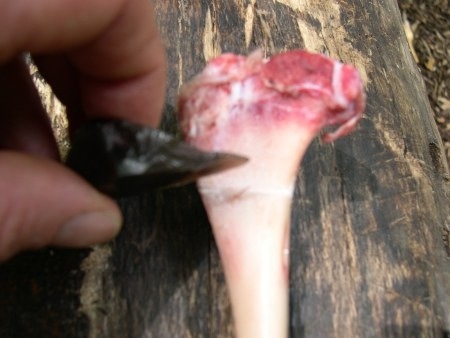
After scoring the line John Rhyder (course instructor) showed me how to scorch the line to make it a little brittle in that area.
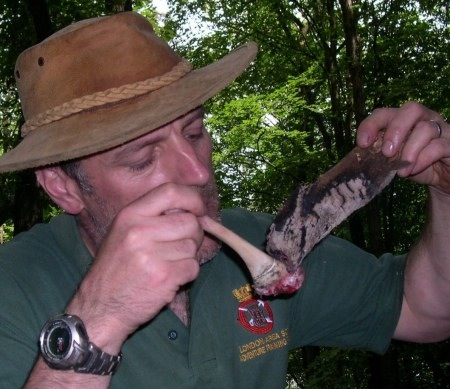
A close up.
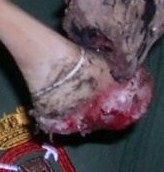
Once the line was scorched all the way around a little gentle tapping was all that was needed.
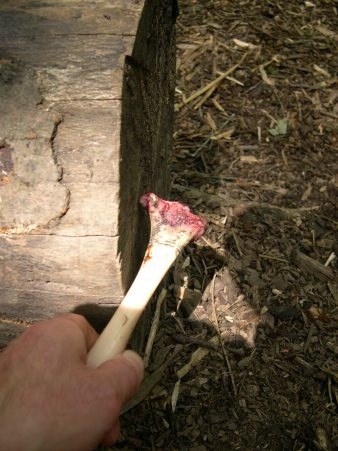
A crack soon appeared.
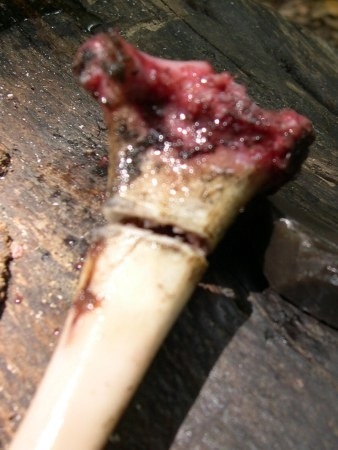
To finally remove the knuckle I carried on scraping with the flint.
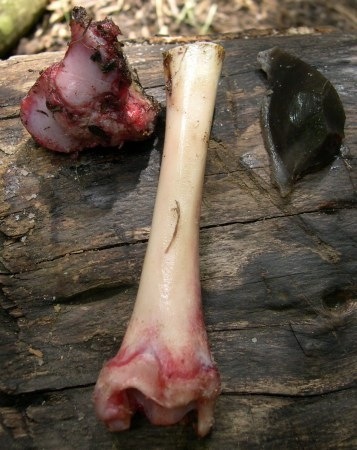
Once the knuckle was removed then I decided on the shape of my knife point. I did this by gently scraping with the flint on the bone to define my knife shape.
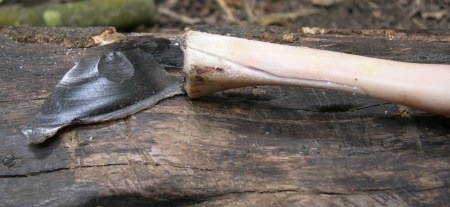
Then making sure that the bone was on a stable surface and held in a secure grip the tedious scraping began. The carving out of the knife shape took a number of hours.
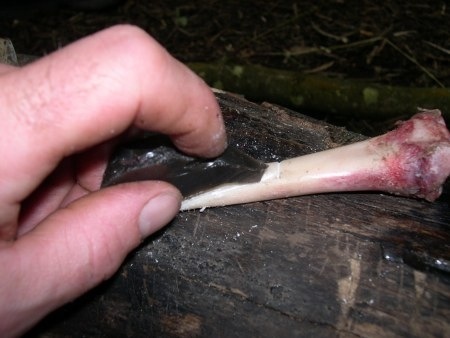
The awl tip taking shape.
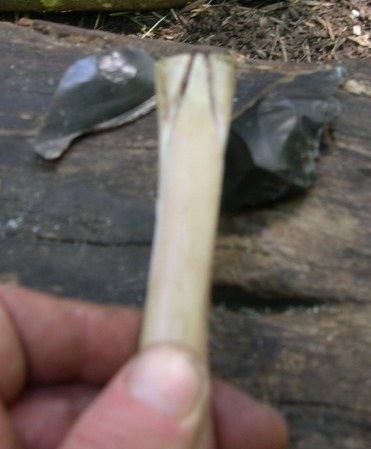
Eventually I was able to prise a section of bone out.
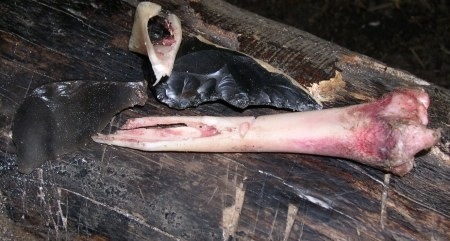
I went through two pieces of flint carving the bone out.
Eventually the general shape of the knife was produced.
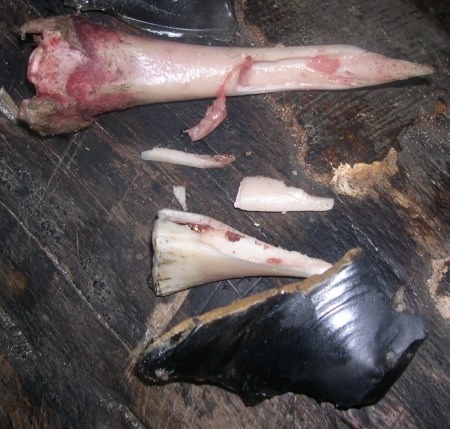
And the other side.
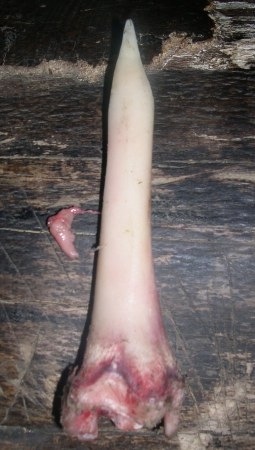
A messy but necessary job is to remove the remaining marrow. I just used a small stick for this.
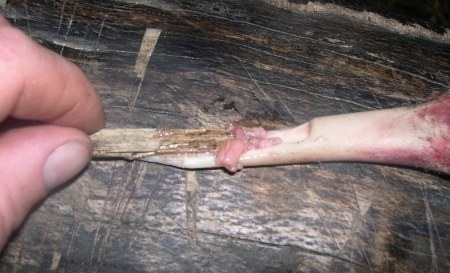
To give the knife a basic edge I used a piece of sandstone.
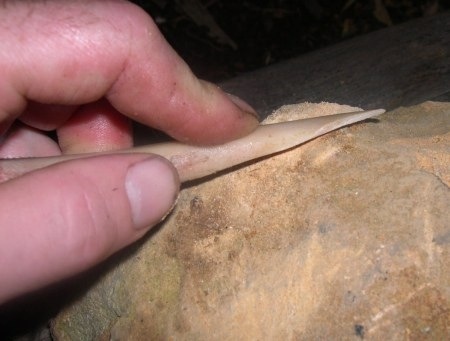
Any rough edges I tidied up with flint.
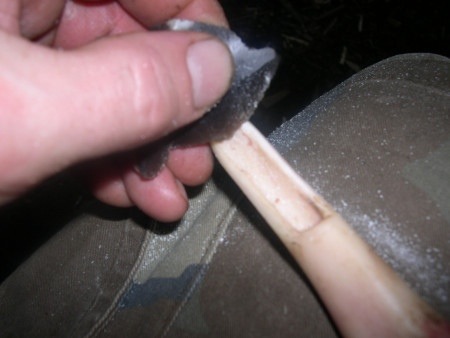
Below you can see the side profile of the knife. This curve is useful as a Bodkin in basket weaving. In the next post you will see that this was the knifes first job.
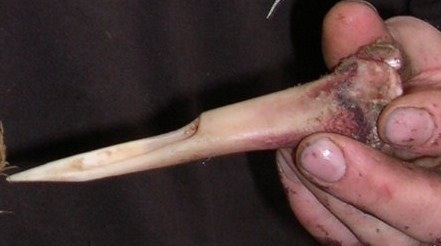
Here the knife is sitting on the inner bark I used to make the sheath out of.
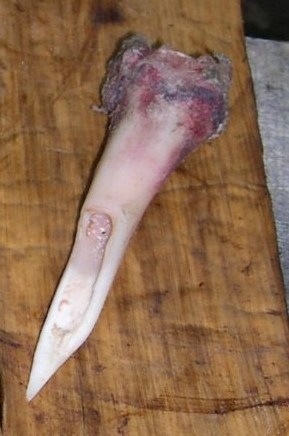
Like any knife it needs a sheath. I did produce one using primitive methods and documented all the steps.
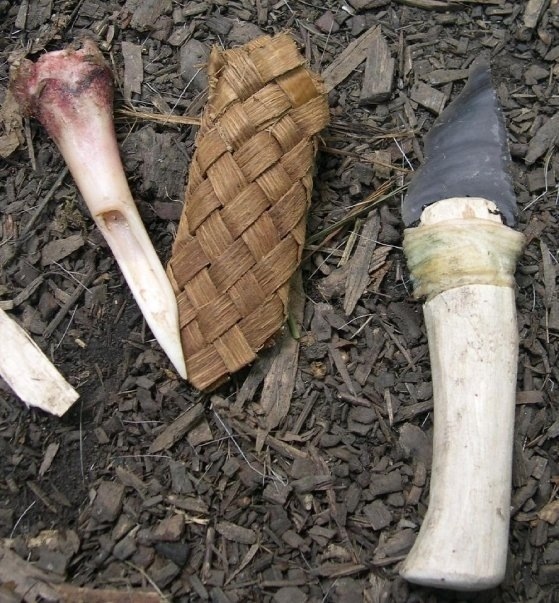
This whole process took a whole afternoon for me but I did find it very relaxing taking my time and really thinking about each step.
Afterwards I left the knife hanging for a few months in my garage to air dry and keep it away from any inquisitive rodents.
More on the bark sheath can be found here – Primitive Skills – Bone Knife Bark Sheath.
George
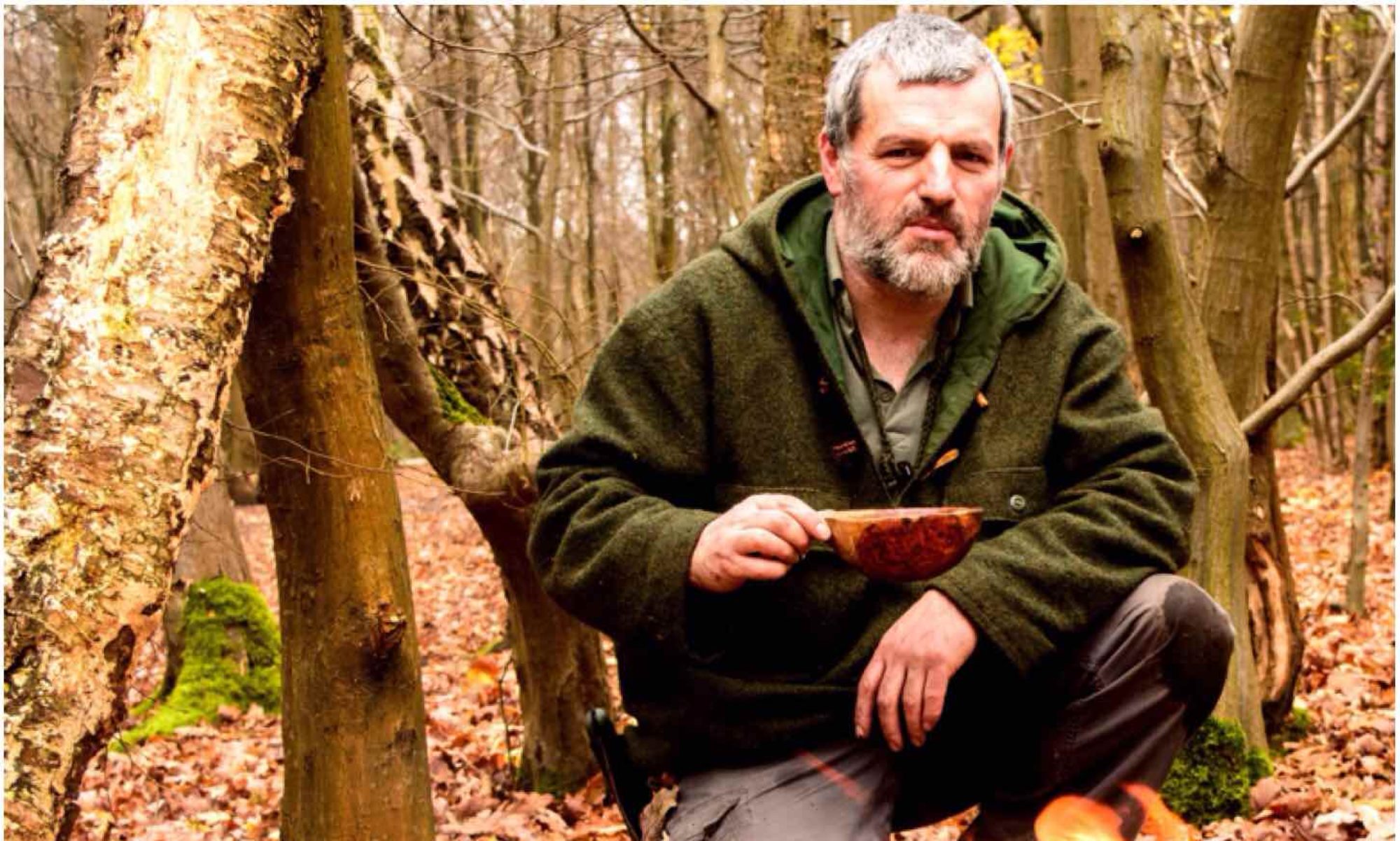
looking forward to the next part regards dave
Thanks Dave. I am working on it but so far it is a bit long. looking to cut down on the pictures.
Cheers
George
Don’t do that, the longer the better. I somehow found your site while looking for something else, & I’m glad I did – it’s very, very interesting. Thanks!
A trip down memory lane for me also. Nicely written George.
Cheers John – It was a cracking course. Rivalled the instructor one.
George